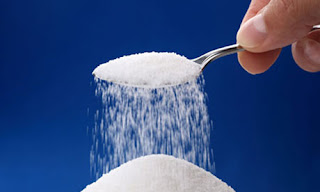Hydrogen makes an extraordinarily efficient and clean fuel. Three times as energy-efficient as petrol, Nasa used it to power its space shuttles. It can be used to generate electricity and only produces water as a byproduct.
And yet, scientists are struggling to scale up hydrogen production. Ironically, given hydrogen's green potential, the cheapest and most viable sources are hydrocarbon-based compounds such as natural gas. But liberating hydrogen from fossil fuels creates carbon emissions that outweigh any environmental advantages.
Percival Zhang, professor of bioengineering at Virginia Tech Institute, says that the problem is not just technical but that, sometimes, "scientists have poor imaginations". And so he wants to try something different: why not take advantage of an abundant natural resource, sugar? "Our idea is that simple," he says. "We call the project Sweet Hydrogen."
Biomass – trees, plants and other waste vegetable matter – is an abundant and rapidly renewable source of starch and sugars, that is nowadays used to produce biofuels. Exploiting biomass to produce sugar, and turning that sugar into hydrogen, could lead a change in global energy production.
In 2011, the US consumed 134bn gallons (507bn litres) of gasoline, but "with our technology, just 700m pounds [317,500 tonnes] of biomass would be enough to replace the whole yearly [gasoline] production," says Zhang. The last official assessments estimate the availability of crop residues for biomass in the US to be about 157m tonnes per year.
Moreover, recent projections find that by 2030 the total biomass resources (coming from crop residues but also from forests, waste and energy crops) available for energy production will be close to 680m tonnes per year.
"So far there have been two different ways to produce hydrogen," says Zhang. "Either you obtain it by heating fossil fuels, such as methane, or by separating water into oxygen and hydrogen through electrolysis." The first solution produces emissions, while the latter is very expensive. "And you still need fossil fuels to perform electrolysis."
In theory, it is also possible to drive hydrogen production using renewable energy such as solar power, but Zhang says this solution is inefficient and is difficult to scale up because it is very expensive. Current methods based on a conventional photovoltaic cell coupled to an electrolyser for producing hydrogen, cost about €15 per kilogram (£13/kg or $20/kg).
Zhang is studying what he calls a simple alternative. "We can now produce hydrogen from every kind of agricultural waste, from cornstalk to wood chips. These residues have no use in the industry and cannot be recycled."
For years he has been looking for cocktails of enzymes that can break down vegetable matter to produce useful sugars. His team is now able to extract high-purity hydrogen at a relatively mild temperature of 50C. To do so, the scientists extracted enzymes from a range of "extremophile" microorganisms that prosper at temperatures as high as 100C. This particular enzyme cocktail doesn't occur in nature, and when fed a type of sugar called xylose, it can liberate three times as much hydrogen as ordinary microorganisms can achieve. Xylose, also called wood sugar, is abundant in nature, being present in variable quantities in most plants.
Because of its improved efficiency and reduced costs Zhang believes his new model could be easily scaled up. He says: "Our technology will produce energy enough for several applications, including a green revolution in the transportation system. I like to think of the movie Back to the Future – after all, that was the first electric car."
Zhang sees a future in which hydrogen-fuelled electric cars will phase out our dependence on fossil fuels.
There are problems with hydrogen in transport, however: the gas needs to be stored and transferred at high pressure, and it's highly flammable. This has prevented the technology from being implemented in small vehicles.
But Zhang's proposed solution to this problem is simple. "Why should we transport hydrogen? We can transport sugar instead, and perform the reaction in the car or in the service station."
Using solid sugar as raw material, he wants to create cheap bioreactors that will produce hydrogen, as required, using the enzyme cocktail developed at Virginia Tech.
The ultimate test for the method's viability will be the creation of a prototype, but at the moment researchers are still working to obtain maximum efficiency from the reaction.
"In the future, these devices will be small enough to be incorporated in a car, where a fuel cell will then turn the hydrogen into electricity," says Zhang. "Our bioreactors will be a feasible option for small vehicles, but they will also work for big industrial complexes. We are designing the whole system to be very cheap, to scale it up easily."
Although still at an early stage, Sweet Hydrogen and the idea of sugar-fuelled cars have already attracted funds from Shell as well as from a number of research institutes in the US, such as the Biodesign and Bioprocessing Research Center at Virginia Tech, the Department of Energy's BioEnergy Science Center and its Office of Basic Energy Sciences.
"We still need to improve the performance of our enzymes combination in order to improve the overall efficiency of the process," Zhang says. "At the beginning we will look at small markets; but as the technology gets better it will have a much bigger impact in terms of money and emissions saving."
Source

No comments:
Post a Comment